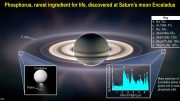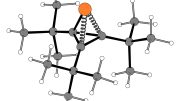
A new study suggests that the weathering of sulfate rocks, not increasing ocean phosphorus levels, was crucial to the oxygenation of Earth’s atmosphere, influencing the late evolution of animal life, and also indicates that potential for complex intelligent life on other planets might require longer incubation times.
A recent research study may have discovered a missing link that helps explain Earth’s uniquely oxygen-saturated atmosphere and the corresponding evolution of animal life on our planet.
The study, led by a Fellow of the Forrest Research Foundation at The University of Western Australia and recently published in the esteemed journal Nature, may hold the key to understanding why, for almost 90% of Earth’s history, oxygen levels remained too low for animals to breathe.
The first major evolutionary event of animal life occurred during an event dubbed the Shuram Excursion – between 570 and 550 million years ago – which is believed to represent a massive release of carbon dioxide and oxygen into the atmosphere and oceans as a result of increasing ocean phosphorus levels.
To test the theory, researchers used a newly developed tool to track the abundance of phosphorus in the oceans hundreds of millions of years ago, recorded in six locations in Australia, China, Mexico, and the US.
The data and Earth chemistry model revealed increasing ocean phosphorus levels could not have explained the rise of oxygen. The effect was only replicated by the model when large quantities of sulfate rock were weathered, releasing sulfate into the oceans to produce vast amounts of oxygen.
Lead author and Forrest Fellow Dr. Matthew Dodd, from the UWA School of Earth Sciences, said the results suggested sulfate, rather than phosphorus, was the main control in the oxygenation of the planet during the first major evolution of complex life.
“Our findings may explain the prolonged low levels of oxygen throughout Earth’s history and consequently the late evolution of animal life on Earth,” Dr. Dodd said. “Importantly, we observe that ocean phosphorus was predominantly low when oxygen levels were low throughout the Shuram Excursion. This phenomenon would have locked the early oceans and atmosphere into an oxygen-devoid state.”
Data from the study also holds implications about the possibility of intelligent life on other planets.
“These results suggest other potentially habitable planets may support complex intelligent life, only if provided with long enough incubation times,” Dr. Dodd said. “This could imply planets around stars larger than the Sun may not develop complex intelligent life due to the relatively short lifetime of large stars.”
Reference: “Uncovering the Ediacaran phosphorus cycle” by Matthew S. Dodd, Wei Shi, Chao Li, Zihu Zhang, Meng Cheng, Haodong Gu, Dalton S. Hardisty, Sean J. Loyd, Malcolm W. Wallace, Ashleigh vS. Hood, Kelsey Lamothe, Benjamin J. W. Mills, Simon W. Poulton and Timothy W. Lyons, 31 May 2023, Nature.
DOI: 10.1038/s41586-023-06077-6









Really, we may be the “other intelligent life”, supposed by other civilizations, on other planets! A serious question, though, are there other’s who resemble us, or are those “others” more like the imaginations of science fiction!